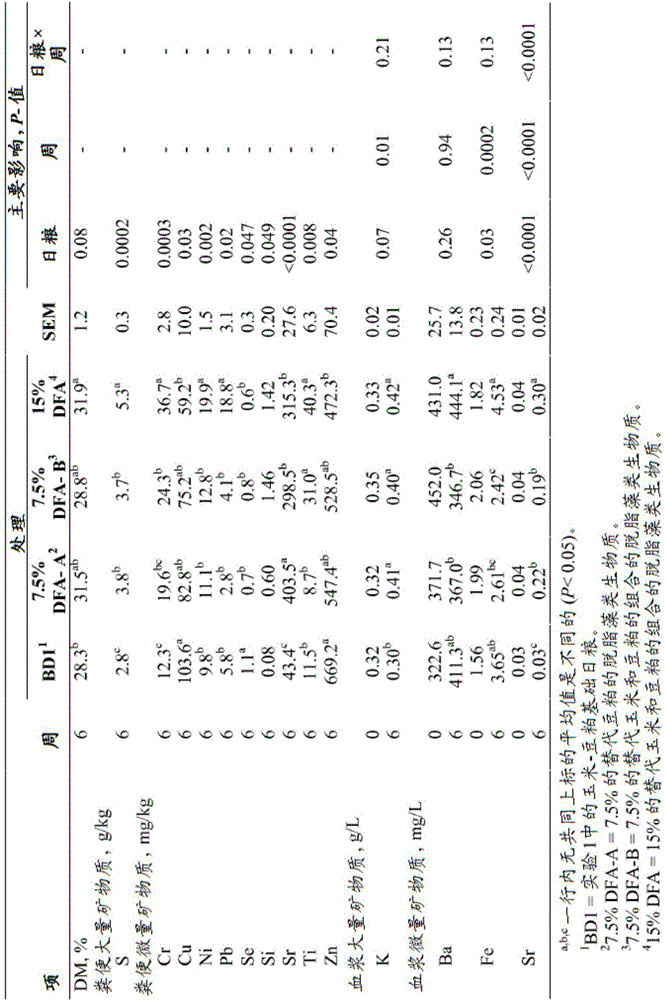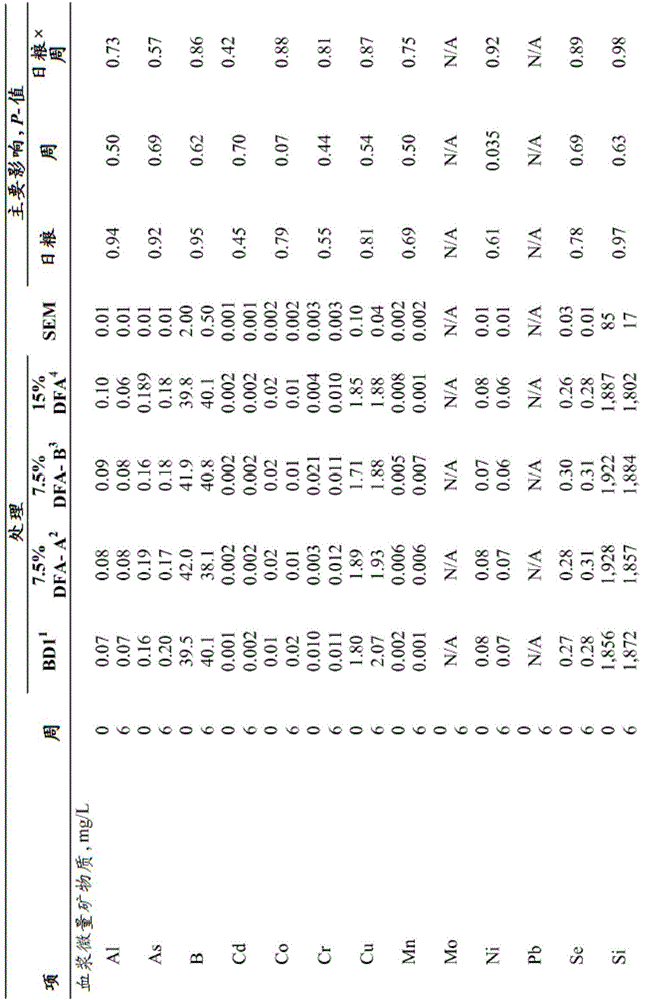Algal-based animal feed composition, animal feed supplement, and uses thereof
A technology of animal feed and composition, which is applied in the direction of animal feed, animal feed, and medical raw materials derived from algae, and can solve problems such as adverse effects on poultry performance
- Summary
- Abstract
- Description
- Claims
- Application Information
AI Technical Summary
Problems solved by technology
Method used
Image
Examples
Embodiment 1
[0085] Example 1 - Microalgal Biomass Diets Supplemented with Defatted and Full Fat Diatoms Microalgal biomass can partially replace corn and soybean meal in diets of weaned piglets
[0086] Materials and methods of Example 1
[0087] Animal and Diet Handling
[0088] Animal experiments were approved by the Institutional Animal Care and Use Committee of Cornell University. All pigs were weaned hybrids (Yorkshire-Landrace-Hampshire) selected from the Cornell University swine farm. Pigs were weaned at 4 weeks of age and assigned to treatment groups based on body weight, litter and sex. Pigs were housed individually in pens (1 x 2.5m) with concrete floors in temperature-controlled barns (22-25°C) using a 12:12 hour light:dark cycle. In both experiments, pigs were fed a corn-soybean meal-based basal diet ("BD") over four days (BD1, BD2). All pigs had free access to feed and water and were monitored daily.
[0089] Preliminary trials were conducted to determine the appropriate...
experiment example 1
[0166] The main finding of Experiment 1 is that 7.5% DFA may be used to replace the same amount of corn and SBM in the diet of weaned piglets. Overall, this substitution did not affect growth performance or health status of pigs compared to those pigs fed BD1. However, either replacement of SBM alone with 7.5% DFA or the combination of maize and SBM with 15% DFA reduced ADG and G:F. The amount of SBM removed from these DFA-containing diets may exceed pig tolerance. 7.5% DFA-B reduced SBM levels by only 5.1% compared to BD1, while 7.5% DFA-A and 15% DFA reduced the levels by 7.5% and 9%, respectively. Because DFA contained only 19% crude protein, while SBM contained 47.5% crude protein, higher levels of SBM substitution may have caused protein and amino acid limitations. These limitations may partly explain the reduced growth performance.
[0167] Diatoms are the principal phytoplankton characterized by silica in the outer membrane of their cell walls (Reimann, B.F., "Deposi...
Embodiment 2
[0172] Example 2 - Defatted Diatoms for Layers: Dose-Dependent Effect of Defatted Diatom Biomass on Egg Production and Egg Quality of Layers
[0173] Materials and methods of Example 2
[0174] Animals, diet handling and management
[0175] A total of 100 ISA Babcock White Leghorn laying hens (47 weeks old, Gallus gallus domesticus) with an initial body weight of 1.57±0.20 kg were randomly assigned to 4 dietary treatments. Each treatment had 5 replicates, and each replicate consisted of a row of 5 individually housed hens in a 60-cage unit. Cages are equipped with nipple drinkers and feed troughs. The hen house was provided with 16 hours of light per day and the hens were given free access to feed and water. The experiment lasted 8 weeks. The protocol used for this study was approved by the Institutional Animal Care and Use Committee of Cornell University.
[0176] The defatted Diatom sp. microalgal biomass used to prepare the experimental diets was generated from studies...
PUM
| Property | Measurement | Unit |
|---|---|---|
| diameter | aaaaa | aaaaa |
Abstract
Description
Claims
Application Information
 Login to View More
Login to View More - R&D
- Intellectual Property
- Life Sciences
- Materials
- Tech Scout
- Unparalleled Data Quality
- Higher Quality Content
- 60% Fewer Hallucinations
Browse by: Latest US Patents, China's latest patents, Technical Efficacy Thesaurus, Application Domain, Technology Topic, Popular Technical Reports.
© 2025 PatSnap. All rights reserved.Legal|Privacy policy|Modern Slavery Act Transparency Statement|Sitemap|About US| Contact US: help@patsnap.com



